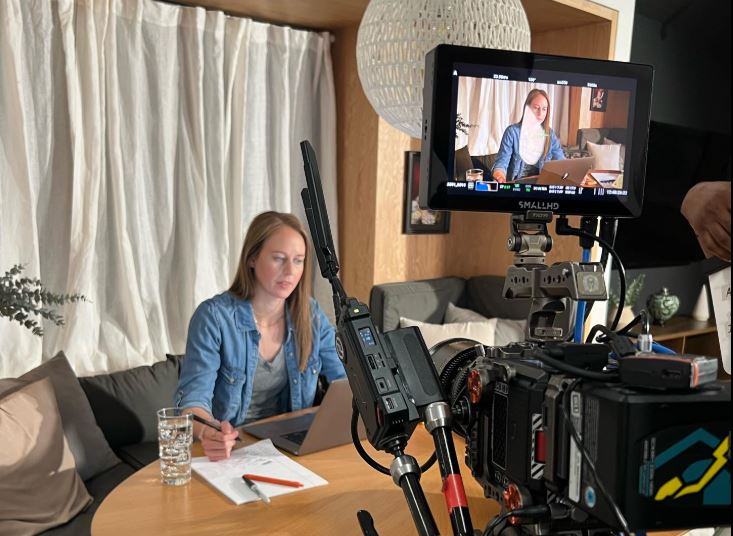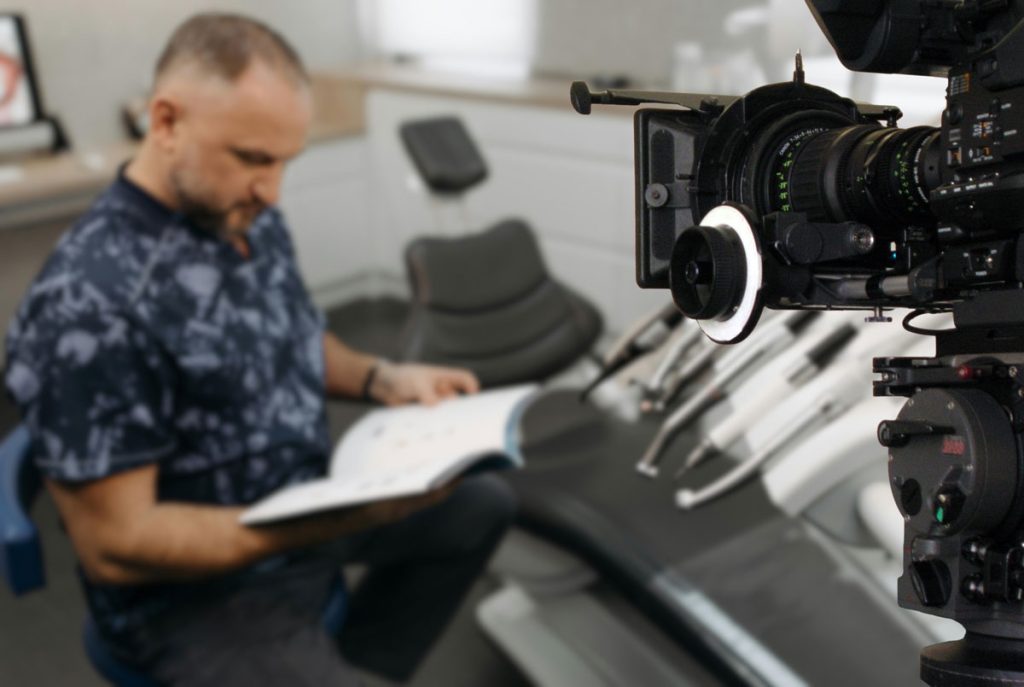What Is A Storyboard In Video Production
Why Storyboarding Matters
Have you ever watched a video that felt seamless—where every shot, transition, and piece of dialogue seemed to flow effortlessly? That polished look doesn’t just happen by chance. More often than not, it begins with a storyboard.
In the world of video production, storyboarding is the unsung hero. It’s more than just sketches on paper; it’s the foundation that keeps a project organized and on track. A well-crafted storyboard acts as a visual blueprint, mapping out scenes, camera angles, and key messages before the cameras ever start rolling. This planning stage eliminates guesswork, reduces miscommunication, and ensures that the creative vision is aligned across the entire team.
For businesses in Memorial City, where competition for attention is high, storyboarding becomes even more valuable. It’s the secret ingredient that transforms raw ideas into professional, impactful videos that resonate with audiences.
By investing in this step, companies can save time, cut costs, and deliver content that not only looks good but also achieves its purpose, whether that’s marketing a product, telling a brand story, or training employees.
Understanding the Basics of a Storyboard
The Definition of a Storyboard
A storyboard is a visual outline of a video, made up of a series of drawings or images that represent each shot. Think of it as a comic strip for your video project—it maps out the sequence, flow, and key details before a camera even rolls.
A Brief History of Storyboarding
Storyboarding dates back to Walt Disney Studios in the 1930s. Animators needed a way to plan films before diving into production. Today, storyboarding has become a standard practice across film, television, advertising, and business video production.

The Role of Storyboarding in Video Production
Turning Ideas into Visuals
Great ideas often get lost in translation. A storyboard acts like a translator, turning abstract concepts into visuals everyone can understand.
Building the Foundation for Storytelling
Whether it’s a corporate explainer or a brand commercial, storyboarding ensures that your message is clear, engaging, and structured. It sets the stage for compelling storytelling.
Key Elements of a Storyboard
Visual Frames
Each frame represents a key moment or shot in the video. These sketches guide camera operators, directors, and editors on how the story unfolds.
Dialogue and Narration
Alongside the visuals, storyboards often include text that shows what characters are saying or what narration is playing in the background.
Camera Angles and Movements
Details about zooms, pans, or close-ups are often added so the crew knows exactly how to capture the scene.
Notes and Production Details
Extra notes may include music cues, lighting directions, or visual effects that need to be added later.
Types of Storyboards Used in Video Production
Traditional Hand-Drawn Storyboards
The old-school method—quick sketches on paper. Simple, but effective for brainstorming.
Digital Storyboards
Created using software tools, these allow for more precision, easy edits, and sharing across teams.
Animatics and Motion Storyboards
These add movement and timing to storyboards, giving teams a sense of pacing before production begins.
Why Businesses in Memorial City Need Storyboarding
Streamlining Marketing Campaigns
In a competitive market like Memorial City, businesses can’t afford wasted resources. Storyboards help streamline campaigns, ensuring every second of video counts.
Saving Time and Costs in Production
Without a storyboard, production often involves endless revisions. With one, you save time, reduce errors, and keep budgets under control.
How Nightwolf Productions Uses Storyboarding
Local Expertise in Memorial City
Nightwolf Productions understands the pulse of Memorial City’s business community. Their team knows how to craft storyboards that resonate with local audiences.
Blending Creativity with Strategy
It’s not just about making pretty sketches—it’s about aligning visuals with business goals. Nightwolf Productions excels at blending creativity with strategy to maximize impact.
Real-World Client Success Stories
From corporate videos to event highlights, Nightwolf Productions has delivered results for Memorial City clients by using storyboarding as a foundation for success.
Steps to Create an Effective Storyboard
Brainstorming and Concept Development
Start by defining the story you want to tell and the audience you’re trying to reach.
Sketching Key Scenes
Rough sketches map out the big moments in your video. Perfection isn’t the goal—clarity is.
Adding Technical Details
This includes dialogue, camera angles, transitions, and notes on sound or graphics.
Reviewing and Refining the Storyboard
Before production starts, the storyboard should be reviewed by all stakeholders to ensure alignment.
Common Mistakes to Avoid in Storyboarding
Skipping Key Details
One of the most frequent mistakes in storyboarding is leaving out crucial notes or directions. While it may seem faster to skip small details, this often leads to confusion during filming, requiring extra time and revisions. Clear notes on camera angles, transitions, and dialogue cues ensure that everyone on the production team understands the vision from start to finish.
Overcomplicating the Process
A storyboard is meant to be a blueprint, not a polished art project. Many teams spend too much time creating elaborate drawings when simple sketches or digital mockups would suffice. The goal is clarity—communicating how scenes should unfold, not creating a gallery-worthy illustration. Keeping it simple saves time and allows for quick adjustments.
Ignoring the Target Audience
Every successful video starts with the audience in mind. A storyboard that looks visually appealing but doesn’t connect with the target viewers can result in wasted resources and underwhelming results.
When planning, always ask: What will resonate most with my audience? Whether it’s humor, emotion, or straightforward information, the storyboard should reflect the intended message and tone.

The Future of Storyboarding in Video Production
AI and Digital Tools
As technology advances, storyboarding is becoming more efficient and intelligent. AI-driven tools can now generate storyboard drafts based on a script, offering suggestions for visuals, camera movements, pacing, and even color palettes. This not only saves time but also helps businesses experiment with multiple creative directions before finalizing their concept.
Interactive Storyboards
The next wave of storyboarding could go beyond static sketches. Interactive storyboards allow teams to click through scenes, adjust pacing, and explore alternative versions of the video in real time.
Imagine being able to test how a different opening shot or soundtrack changes the flow—before ever picking up a camera. This flexibility could transform collaboration between creative teams, clients, and production crews.
Collaborative Cloud-Based Platforms
Future tools are also expected to make storyboarding more collaborative. Cloud-based platforms will enable teams in different locations to edit, comment, and review storyboards simultaneously, reducing miscommunication and keeping projects moving forward.
Nightwolf Productions Serving the Memorial City Community and Beyond in Houston
Nightwolf Productions is dedicated to serving the diverse needs of the local community of Houston, including individuals residing in neighborhoods like Memorial City. With its convenient location near landmarks such as the Rummel Creek and major intersections like Queensbury Lane & Cherrybark Lane (coordinates:29.777336868155505, -95.56328850210902), we offer instructional video production Houston services.
Get Instructional Video Production at Memorial City Now
Navigate from Memorial City to Nightwolf Productions Now
Bringing Your Vision to Life
A storyboard is more than just a series of sketches, it’s the roadmap to a successful video. For businesses in Memorial City, working with experts like Nightwolf Productions ensures your message is not only seen but remembered. From brainstorming to the final cut, storyboarding is the glue that holds everything together.
FAQs
1. What is the main purpose of a storyboard in video production?
A storyboard provides a visual roadmap that guides the entire production team, making sure everyone is aligned before filming starts.
2. Can small businesses in Memorial City benefit from storyboarding?
Absolutely. Storyboarding saves time, reduces costs, and helps even small businesses create professional-quality videos.
3. How detailed should a storyboard be?
It depends on the project. Some storyboards are rough sketches, while others are detailed with camera angles, dialogue, and sound notes.
4. Does Nightwolf Productions offer storyboarding services?
Yes, Nightwolf Productions uses storyboarding as a key step in their video production process to deliver results for clients in Memorial City.
5. Are digital storyboards better than hand-drawn ones?
Digital storyboards are easier to edit and share, but hand-drawn versions can be just as effective for quick brainstorming.
6. How does storyboarding improve storytelling in videos?
It ensures that every scene contributes to the overall message, making the final video more engaging and impactful.
Related News







